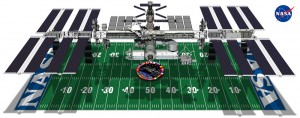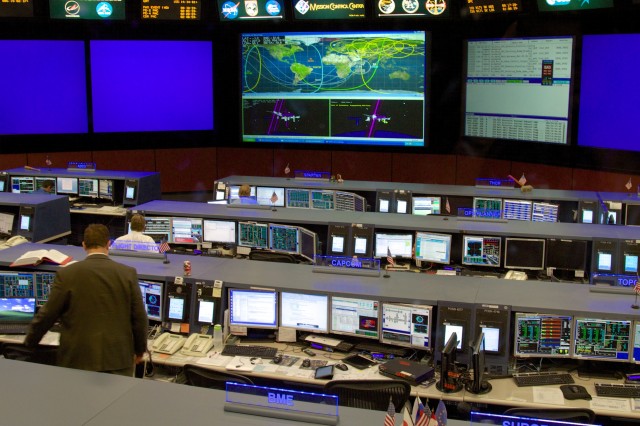How NASA steers the International Space Station around space junk
Ars Technica » Scientific Method 2013-07-09
Orbiting about 250 miles (400-ish km) above our heads is one of the most complex and expensive engineering projects that the human race has ever put together: the International Space Station (ISS). The station masses around 450 tons (400 metric tons) and is a bit larger than an American football field. Its assembly required dozens and dozens of launches by Russia and the US (including 37 space shuttle flights), and it took astronauts and cosmonauts 155 spacewalks to get the whole thing bolted together—2.5 times more spacewalks than had previously occurred since the beginning of space flight.
The ISS has taken 13 years and as much as $150 billion to build and fly; to call it valuable real estate is an understatement. As we Americans are relaxing for the Fourth of July and drinking beers or lighting off fireworks, high above our heads, six human beings are working in space. But the station isn't just sitting up there, static and unmoving. The ISS' orbit decays due to atmospheric drag at the rate of about two kilometers per year; it must periodically be boosted in order to maintain its height. Moreover, the entire massive structure is mobile—it can be rolled and pitched and yawed, or even moved ("translated," in NASA parlance) in three dimensions to avoid a potential collision with debris.
Ars Senior Science Editor John Timmer wrote back in May about the complex process behind moving unmanned satellites around in orbit—specifically, what it took to move NASA's Fermi Gamma-ray Space Telescope out of the way of some debris in its orbital path. But the ISS isn't an unmanned satellite; its mass is much larger. More importantly, it has six living, breathing human beings on board. How does one move 400 tons of fragile space station when there's an asteroid or something bearing down on it?
Read 20 remaining paragraphs | Comments






